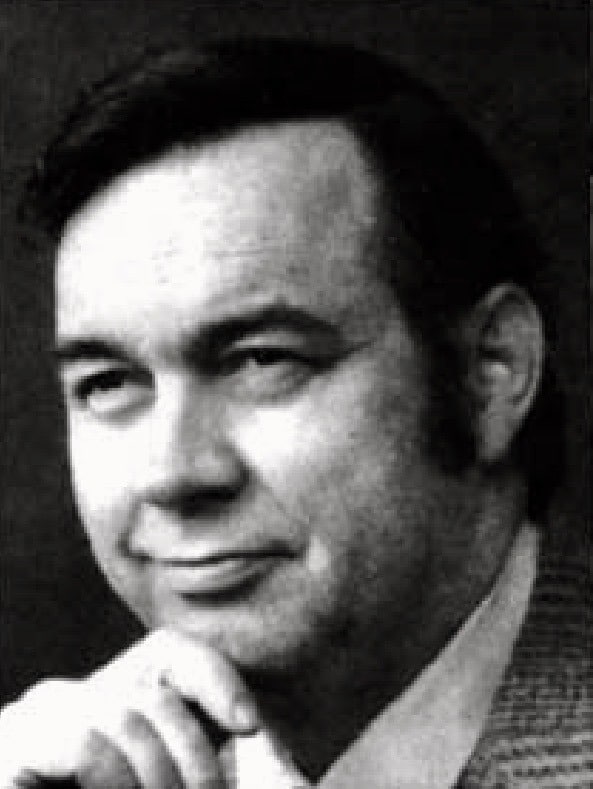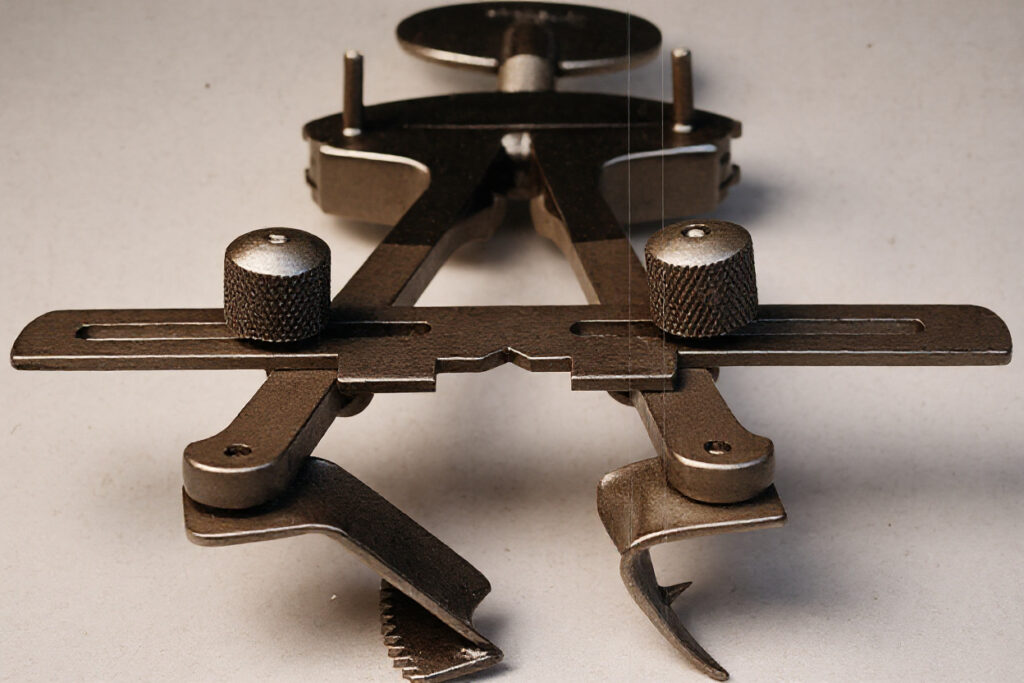John Epley

John McNaughton Epley (1930-2019) was an American otolaryngologist.
Epley was an American otolaryngologist and pioneering vestibular specialist best known for developing the Epley maneuver, a now-standard treatment for benign paroxysmal positional vertigo (BPPV). His work profoundly shaped clinical neurotology and rehabilitative care for vertigo sufferers worldwide.
Born in Eugene, Oregon, Epley was raised in Klamath Falls, where he developed early passions for music and physics. After earning his M.D. in 1957 from the University of Oregon Medical School, he trained at Jackson Memorial Hospital and later at Stanford Medical Center, where in 1964 he co-authored the landmark first report of multichannel cochlear implantation in humans.
Driven by a fascination with vertigo, Epley established a private ENT practice in Portland in 1965, where he began groundbreaking work on repositioning therapies for BPPV. His “canalithiasis theory” challenged the prevailing cupulolithiasis model of positional vertigo and laid the foundation for his 1980 description of the Epley maneuver. Despite initial professional skepticism, he published his results in 1983 and, after a pivotal NEJM review in 1999, received international recognition.
In 2009, he retired following a stroke that limited his communication but left his legacy firmly established. Epley also invented the Omniax Chair, a 360-degree rotation device used in vestibular diagnosis and therapy.
Biography
- 1930 – Born February 8 in Eugene, Oregon
- 1948 – Graduated from Klamath Union High School
- 1957 – M.D. from University of Oregon Medical School
- 1958 – internship at Jackson Memorial Hospital, Coral Gables, Florida; 3 years as a Captain heading the ENT Department at Vandenberg Air Force Base
- 1964 – Co-authored first report of multichannel cochlear implant in man
- 1965 – completed surgical residency at Stanford Medical School; opened private ENT practice in Portland, Oregon
- 1979 – original Particle Theory for Benign Paroxysmal Positional Vertigo (BPPV)
- 1980 – Presented canalithiasis theory and first described Epley maneuver
- 1983 – Published first article on canalith repositioning with Dominic Hughes
- 1996 – Oregon Board of Medical Examiners notified Epley that he was under investigation for alleged unprofessional conduct – later dismissed in 2001
- 1999 – Epley maneuver endorsed as standard BPPV treatment in NEJM
- 2009 – Retired after stroke
- 2019 – Died July 30, aged 89
Medical Eponyms
Epley maneuver (1980)
A particle repositioning manoeuvre for the treatment of BPPV – with the aim of moving the canaliths out of the posterior semicircular, back into the utricle. It has been shown to be safe and effective at resolving BPPV in 50-85% of cases (2014, 2013).
The original manoeuvre was first described by John Epley in 1980 also involved vibrations over the mastoid during the manoeuvre. Today the Modified Epley is performed without the vibrations.
See the Epley maneuver page for details on how to perform it and an original video produced by John Epley himself.
Key Medical Contributions
Canalithiasis Theory
Epley proposed the canalithiasis theory in 1980 in his paper New dimensions of benign paroxysmal positional vertigo, contrasting with Cupulolithiasis (Schuknecht, 1962). Cupulolithiasis and canalithiasis are two distinct theories that explain the mechanisms behind Benign Paroxysmal Positional Vertigo (BPPV).
Cupulolithiasis refers to otoconia (calcium carbonate crystals normally found in the utricle of the inner ear) adhering to the cupula, a gel-like structure within the semicircular canals. This adhesion causes the cupula to become heavier and more sensitive to gravity, leading to abnormal deflection during head movements. As a result, the affected individual experiences vertigo and nystagmus (involuntary eye movement) because the brain receives incorrect signals about the head’s position in space
Canalithiasis describes the scenario where otoconia are free-floating within the semicircular canals. When the head moves, these particles move through the canal, displacing the endolymph and causing the cupula to deflect. This deflection leads to an inappropriate excitation or inhibition of the vestibular nerve, which is responsible for transmitting balance information to the brain. The movement of the otoconia through the canal results in a transient and intense episode of vertigo, typically lasting less than a minute.
The distinction between these two conditions is crucial for determining the appropriate treatment. For example, the Epley maneuver is commonly used to treat canalithiasis by guiding the free-floating otoconia back to the utricle, where they can be reabsorbed.
Hypotympanotomy (Epley) retractor (1979)
A retractor designed to allow an inferior oriented approach to the middle ear such as in posterior ampullary nerve transection, the trans-cochlear approach to the internal auditory meatus or glomus tympanicum resection.

Omniax Chair
Epley developed the Omniax Chair in the early 2000s, with prototypes emerging around 2002–2004. It was commercialised through Vesticon, Inc., and later refined for broader clinical use. The chair allows 360° rotation and precise control of head/body position to facilitate accurate diagnosis and treatment of complex or refractory BPPV cases. Particularly helpful in complex BPPV cases or in patients unable to perform standard manoeuvres.
Major Publications
- Epley JM. Modified technique of iontophoretic anesthesia for myringotomy in children. Arch Otolaryngol. 1977;103(6):358-360.
- Epley JM. Air-caloric delivery tube adapter. Otolaryngology. 1978;86(6 Pt 1)
- Epley JM. Hypotympanotomy retractor. Otolaryngol Head Neck Surg. 1980; 88(4): 470-471.
- Epley JM. New dimensions of benign paroxysmal positional vertigo. Otolaryngol Head Neck Surg. 1980; 88(5): 599-605.
- Epley JM. The canalith repositioning procedure: for treatment of benign paroxysmal positional vertigo. Otolaryngol Head Neck Surg. 1992;107(3):399-404.
- Epley JM. Positional vertigo related to semicircular canalithiasis. Otolaryngol Head Neck Surg. 1995;112(1):154-161.
- Epley JM. Particle repositioning for benign paroxysmal positional vertigo. Otolaryngol Clin North Am. 1996;29(2):323-331.
- Epley JM. Human experience with canalith repositioning maneuvers. Ann N Y Acad Sci. 2001; 942: 179-191.
Controversies
Epley faced over a decade of scepticism and ridicule from peers in his field who did not believe in his repositioning manoeuvre. This led to colleagues questioning his medical skills in general and in 1996 The Oregon Board of Medical Examiners notified Epley that he was under investigation for alleged unprofessional conduct. It was not until 2001 that these claims were finally dismissed.
Physicians learn to just do the routine, to do the accepted things — don’t go too far out. They’ve got so much to lose if they stick their neck out
Epley
References
Biography
- Obituary: John McNaughton Epley M.D. Dignity Memorial 2019
- Ramirez L, Huang B, Katz JM. John McNaughton Epley: his life and theory that challenged convention in the study of benign paroxysmal positional vertigo. Neurol Sci. 2025 Jan;46(1):485-487.
Eponymous terms
- Parnes LS, Agrawal SK, Atlas J. Diagnosis and management of benign paroxysmal positional vertigo (BPPV). CMAJ. 2003;169(7):681-693.
- Radtke A et al. Self-treatment of benign paroxysmal positional vertigo: Semont maneuver vs Epley procedure. Neurology. 2004; 63(1): 150-152.
- Prokopakis E, Vlastos IM, Tsagournisakis M, Christodoulou P, Kawauchi H, Velegrakis G. Canalith repositioning procedures among 965 patients with benign paroxysmal positional vertigo. Audiol Neurootol. 2013;18(2): 83-88
- Hilton MP, Pinder DK. The Epley (canalith repositioning) manoeuvre for benign paroxysmal positional vertigo. Cochrane Database of Systematic Reviews 2014; 12: CD003162.
- RojasBurke J. Epley maneuver for vertigo was invented by Oregon doctor. The Oregonian. October 2019
- Kalmanson O, Foster CA. Cupulolithiasis: A Critical Reappraisal. OTO Open. 2023 Mar 1;7(1):e38
Eponym
the person behind the name
Studied at Univerisity of Cambridge - BA MB BChir. British doctor working in emergency medicine in Perth, Australia. Special interests include primary care and emergency medicine.


I worked with Dr. Epley, as his IT Consultant, for a number of years. He was a very humble man. In my many conversations with him, he always gave credit to his Creator for his contributions to the medical field. I was very sad to see him retire. He really enjoyed helping people in getting relief from BPPV.